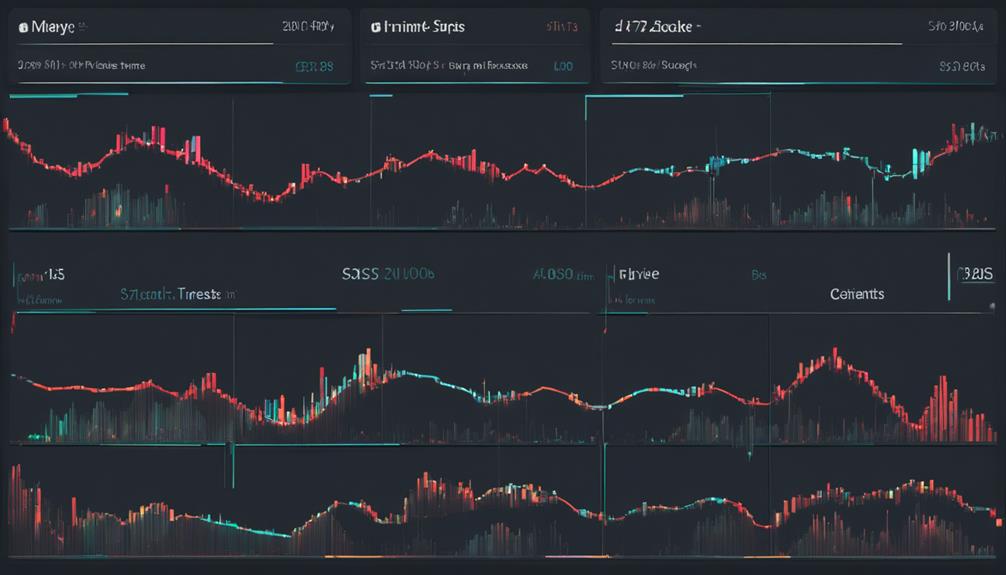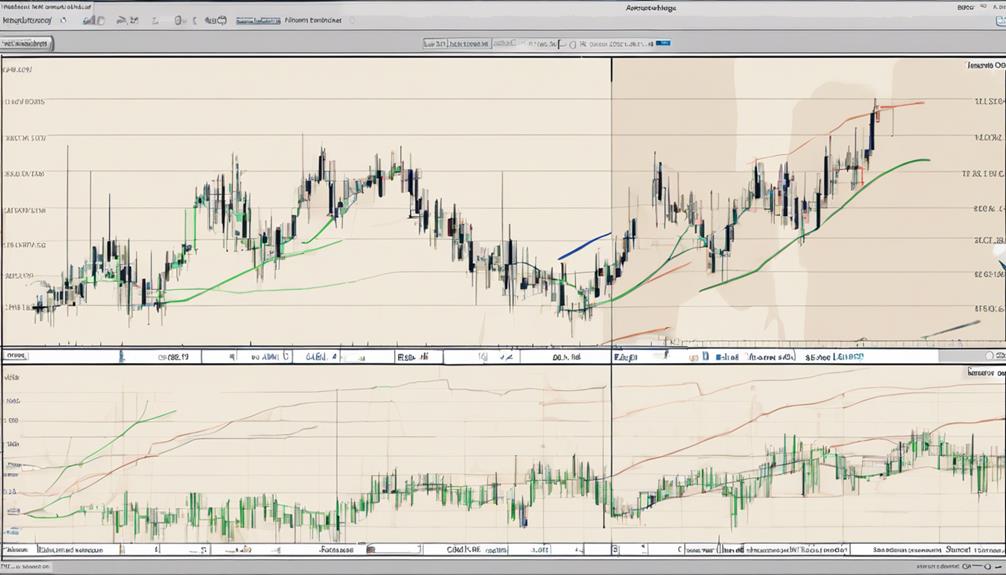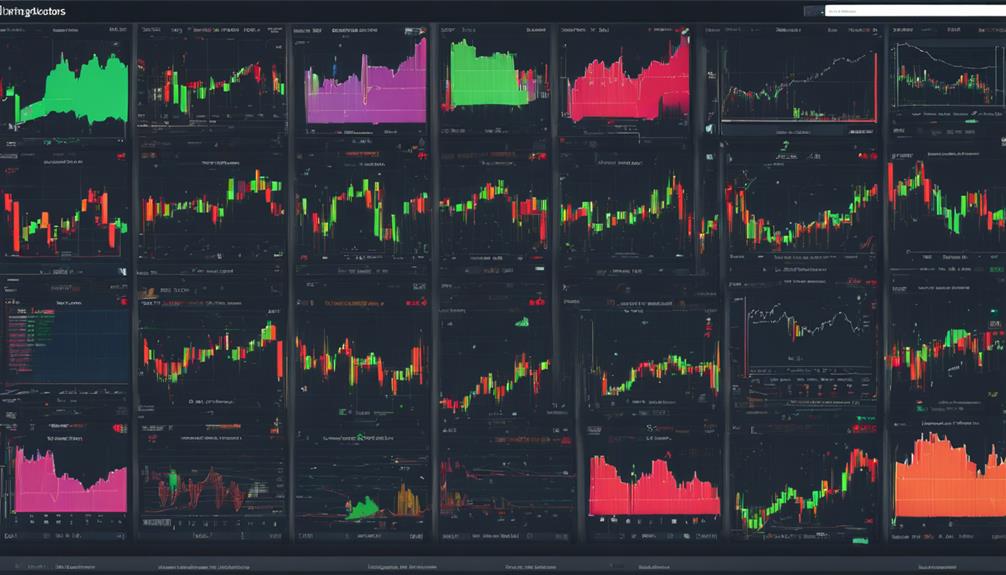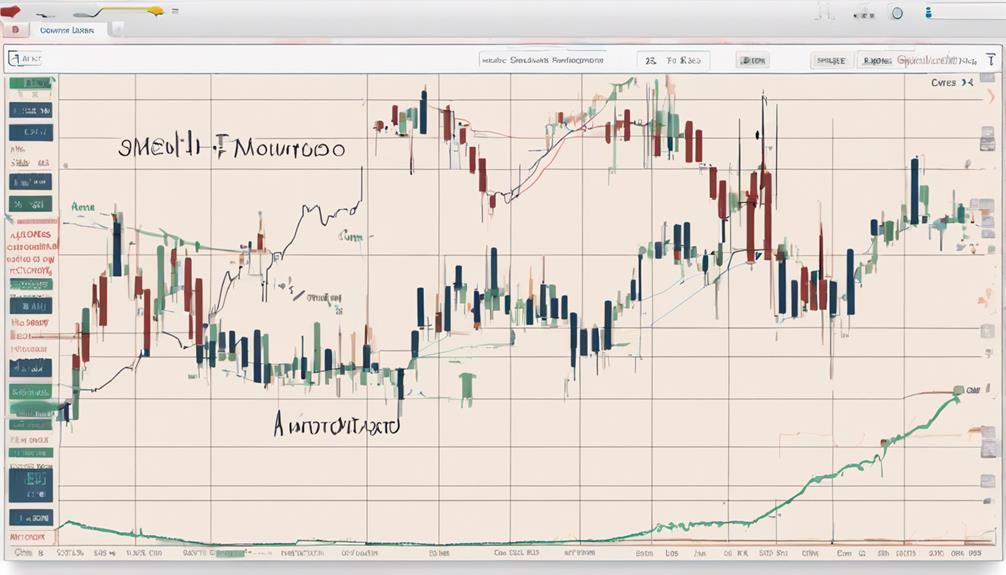Ever find yourself adrift in the sea of momentum indicators, wondering which path leads to the treasure trove of optimal practices? Well, fear not, for amidst the waves of technical analysis lies a compass pointing towards clarity and profitability.
But remember, the journey towards mastering momentum indicators is not for the faint of heart. So, buckle up and prepare to navigate through the intricacies of time frames, indicator settings, and the art of blending tools for a successful voyage in the turbulent waters of the market.
Importance of Indicator Settings
Customizable indicator settings play a pivotal role in shaping the responsiveness and accuracy of momentum indicators. The moving average line's period length is a critical parameter in technical analysis, impacting how quickly the indicator responds to price changes.
By adjusting the indicator settings, such as the period length, traders can fine-tune the sensitivity of momentum indicators to match their preferred time frame and trading style. Experimenting with different periods like 7, 14, or 21 can help optimize the indicator's ability to generate timely signals for trend analysis.
The smoother or faster movements of the indicator are directly influenced by these settings, making it essential to customize them to align with current market conditions and enhance overall effectiveness.
Utilizing Multiple Time Frames

Utilizing multiple time frames in your analysis of market trends and momentum shifts enhances your ability to make well-informed trading decisions.
By observing longer time frames, you gain a broader view of market trends, while shorter time frames pinpoint entry and exit points with precision.
Aligning your trades with momentum from higher time frames can validate trading signals and improve decision-making.
It's essential to strike a balance when incorporating multiple time frames to prevent information overload and stay focused on key momentum indicators.
This approach provides a comprehensive understanding of market momentum across different horizons, guiding you towards more effective trading strategies.
Incorporating Other Technical Tools

To enhance the accuracy of your analysis when incorporating other technical tools alongside momentum indicators, consider utilizing tools like StochasticsRSI and Relative Vigor Index. Combine these with trend lines, support/resistance levels, chart patterns, and candlestick patterns to gain comprehensive market insights.
Incorporating volume indicators can further confirm price movements and trading signals. Experiment with tools such as MACD, RSI, and Average Directional Index to find a balanced combination that aligns with your trading style and objectives.
Considering Trading Style

Considering your trading style is crucial when determining the appropriate time frames for utilizing momentum indicators effectively. Here are some key points to keep in mind:
- Day Trading: Opt for shorter time frames like 5 or 15 minutes for more sensitive signals.
- Swing Trading: Focus on daily or weekly time frames to reduce noise in signals.
- Scalping: Consider using tick charts for ultra-short-term trading strategies.
- Long-Term Investing: Analyze monthly charts to capture broader market trends with momentum indicators.
Evaluating Market Conditions

Assessing market conditions is essential for determining the most effective momentum indicator settings and strategies for your trading approach. When evaluating momentum indicators, consider market volatility and trend conditions to adapt your approach accordingly.
Take into account asset liquidity and specific characteristics to align the indicators with the asset you're trading. Stay informed about economic events and news releases that could influence market sentiment and impact momentum behaviors.
Adjust time frames based on the current market context to ensure that momentum signals are accurate. Utilizing multiple time frames can help confirm signals and reduce the risk of false trading signals in different market conditions.
How Can Momentum Indicators be Utilized for Optimal Practices?
Implementing momentum indicators strategy can provide valuable insight into the strength or weakness of a trend. By using tools like the Relative Strength Index (RSI) or Moving Average Convergence Divergence (MACD), traders can make informed decisions about when to enter or exit positions for optimal results.
Frequently Asked Questions
What Are the Best Settings for the Momentum Indicator?
When setting up the Momentum Indicator, consider periods of 7, 14, or 21 for optimal sensitivity. These settings affect how quickly the indicator responds to price changes. Experiment with different configurations to align with your strategy and market conditions.
What Is the Momentum Indicator Strategy?
To understand the momentum indicator strategy, you analyze price speed and strength by comparing current and past closing prices. This reveals price acceleration or deceleration, guiding buy or sell decisions. Traders combine it with other tools for confirmation and better decisions.
What Is the Best Indicator to Catch Momentum?
To catch momentum effectively, look to the Relative Strength Index (RSI). RSI identifies overbought or oversold conditions, aiding in spotting potential trend shifts. Combine RSI with other tools for comprehensive analysis and sound trading decisions.
What Is the Best Momentum Strategy?
In mastering the best momentum strategy, embrace a blend of indicators like MACD, RSI, and Stochastic Oscillator. Combine the 100 Line Cross and divergence trading strategies for precise signals, and enhance with moving average crossovers for confirmation.
Conclusion
In conclusion, optimizing momentum indicators involves adjusting settings, utilizing multiple time frames, and incorporating other technical tools.
By considering your trading style and evaluating market conditions, you can enhance your analysis and make more informed decisions.
Remember to experiment with different parameters and strategies to maximize the benefits of momentum indicators while managing potential drawbacks.
Stay proactive, stay adaptable, and stay ahead in your trading journey.


